A perfectly flaky pie crust is the foundation of any great pie, and using Crisco shortening can make all the difference. Crisco offers a unique blend of tenderness and flakiness that elevates homemade crusts above the rest. Whether you’re a seasoned baker or a beginner looking for a foolproof method, this guide has you covered.
In this article, you’ll learn why Crisco is a favorite among bakers, the science behind its success, and a step-by-step recipe to make the best pie crust every time. We’ll also address common pitfalls, offer customization tips, and answer FAQs to ensure you master the art of pie crust making with ease.
Learn more about baking essentials in our Chocolate Chip Bread recipe for more inspiration.
Introduction to Pie Crust Recipe Using Crisco
What Makes Crisco a Popular Choice for Pie Crust Recipes?
Crisco, a well-known vegetable shortening, has long been a trusted ingredient in kitchens worldwide. Its neutral flavor and ability to create a tender, flaky crust make it an ideal choice for pies. Unlike butter, which has a lower melting point, Crisco is easier to work with, especially for novice bakers. It ensures consistent results regardless of baking experience or the recipe’s complexity.
Benefits of Using Crisco Over Other Fats
Using Crisco in pie crusts offers several advantages:
- Flakiness: Its unique structure creates layers, resulting in a light, airy texture.
- Ease of Use: Crisco remains pliable, making it simpler to cut into flour without melting prematurely.
- Neutral Flavor: Unlike butter, which can overpower subtle fillings, Crisco provides a blank canvas for sweet and savory pies alike.
Overview of What You’ll Learn in This Guide
This guide is your one-stop resource for mastering pie crust recipes using Crisco. You’ll uncover the essential techniques for achieving perfect consistency, troubleshoot common issues, and explore creative variations. With detailed instructions and expert tips, you’ll be well on your way to impressing friends and family with flawless pies.
Understanding the Basics of Pie Crust Recipe Using Crisco
What is Pie Crust?
A pie crust is the foundation of any pie, acting as both a structural support and a flavorful component. Whether it’s a sweet apple pie or a savory quiche, the crust needs to complement the filling. The perfect crust strikes a delicate balance between being tender yet sturdy enough to hold the filling without becoming soggy.
Pie crusts generally come in two types:
- Flaky Crusts: Ideal for fruit pies and tarts, created by incorporating fat into the flour in small chunks.
- Mealy Crusts: Better for custard pies, achieved by working the fat into finer pieces to create a sturdier texture.
The Role of Fat in Pie Crust Texture
Fat is the cornerstone of a great pie crust, contributing to its taste and texture. Here’s why it matters:
- Flakiness: Fat creates pockets of air in the dough, resulting in layers that bake into a flaky crust.
- Tenderness: The right fat prevents overhydration, which can make the dough tough.
- Flavor: Different fats, like Crisco, butter, or lard, impart distinct flavors and qualities to the crust.
Crisco, with its 100% fat composition, excels at producing tender and flaky crusts without the risk of water content impacting the texture.
Basic Ingredients for Pie Crust Recipes
Creating a successful pie crust starts with a few basic ingredients:
- Flour: All-purpose flour is the go-to choice, offering the right balance of protein and starch.
- Fat: Crisco is the preferred option here for its unmatched ability to create flaky layers.
- Liquid: Ice water is key to keeping the fat cold and ensuring the dough binds properly.
- Salt: Enhances the flavor and balances sweetness in fillings.
Optional additions like sugar (for sweet crusts) or vinegar (to tenderize the dough) can be incorporated for specific recipes.
Why Choose Crisco for Your Pie Crust?
Comparison: Butter vs. Crisco for Pie Crusts
When it comes to pie crusts, the age-old debate often revolves around butter versus Crisco. Here’s how they compare:
- Butter: Offers a rich, distinct flavor and can create flakiness. However, it has a higher water content, which can make dough trickier to handle.
- Crisco: Provides superior flakiness and tenderness due to its 100% fat content. Its neutral flavor makes it versatile for both sweet and savory pies.
While butter is celebrated for its taste, Crisco is unmatched for consistent texture and ease of preparation.
Advantages of Crisco for Baking
Crisco is specifically engineered to deliver excellent results in baking. Key benefits include:
- Temperature Stability: Crisco remains stable at room temperature, unlike butter, which melts quickly. This makes it easier to handle during dough preparation.
- Flaky Texture: Its molecular structure creates distinct layers in the crust.
- Long Shelf Life: Unlike butter or lard, Crisco doesn’t spoil as quickly, ensuring it’s always ready for your next baking session.
Health Considerations with Crisco
Crisco has evolved over the years to meet health-conscious demands. Modern Crisco products are now trans-fat-free, making them a healthier alternative to traditional shortening. It’s also cholesterol-free, making it suitable for individuals aiming to reduce saturated fat intake.
By choosing Crisco, you’re setting yourself up for pie crust success with minimal hassle and maximum flavor possibilities.
The Perfect Crisco Pie Crust Recipe
Ingredients Needed for the Recipe
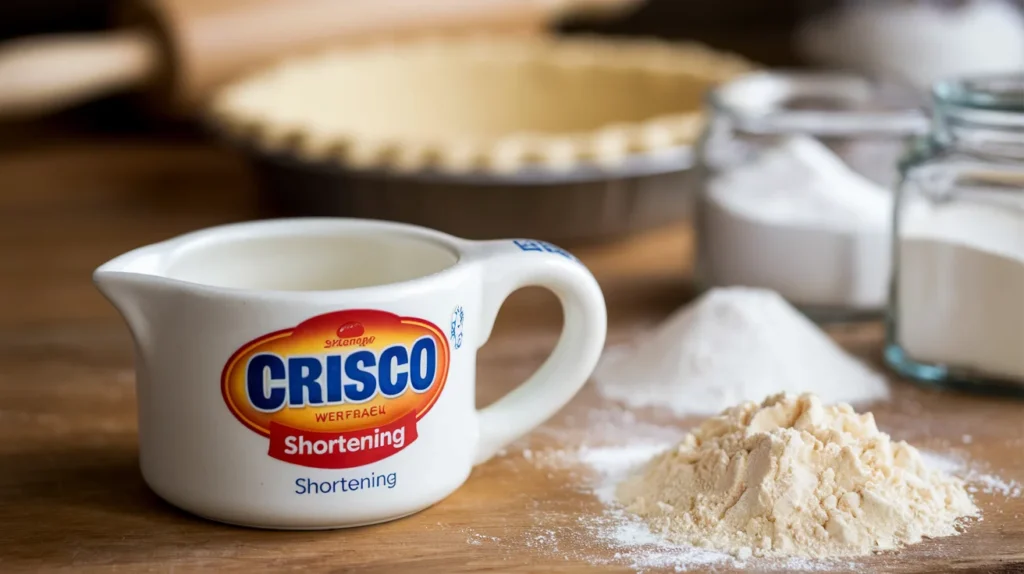
To make the ultimate Crisco pie crust, you’ll need the following:
- 2 ½ cups all-purpose flour
- 1 teaspoon salt
- 1 cup Crisco shortening (chilled for best results)
- 6–8 tablespoons ice water
Optional ingredients:
- 1 tablespoon sugar (for sweet crusts)
- 1 teaspoon vinegar (for a more tender dough)
Step-by-Step Instructions
- Prepare Your Ingredients:
- Measure out all ingredients. Ensure the Crisco shortening is cold but not frozen.
- Fill a small bowl with ice water and set aside.
- Mix the Dry Ingredients:
- In a large mixing bowl, whisk together the flour, salt, and sugar (if using).
- Cut in the Crisco:
- Add the chilled Crisco to the dry mixture.
- Use a pastry cutter or your fingertips to work the Crisco into the flour until the mixture resembles coarse crumbs with pea-sized chunks of shortening.
- Add the Ice Water:
- Gradually sprinkle 1 tablespoon of ice water at a time over the mixture. Toss gently with a fork after each addition. Stop when the dough starts to come together but isn’t sticky.
- Form the Dough:
- Gather the dough into two equal balls. Flatten each into a disc, wrap in plastic wrap, and refrigerate for at least 30 minutes to allow the dough to rest.
- Roll Out the Dough:
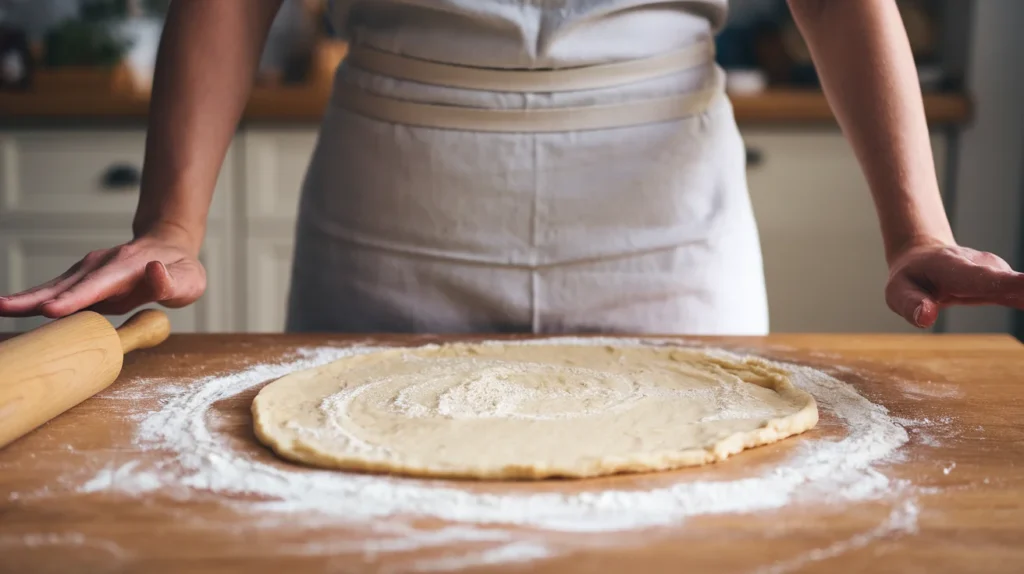
- On a lightly floured surface, roll out one disc of dough into a circle about 2 inches larger than your pie pan.
- Carefully transfer the rolled dough to the pie pan, pressing gently to fit.
- Prepare for Baking:
- Add your filling and top with the second crust, if making a double-crust pie. Trim and crimp the edges for a decorative finish.
- For a single crust, prick the bottom with a fork to prevent bubbling.
- Bake to Perfection:
- Follow your pie recipe’s baking instructions. Typically, bake at 375°F (190°C) for 20–30 minutes or until the crust is golden brown.
Common Mistakes to Avoid
- Overworking the dough, which can result in a tough crust.
- Adding too much water, leading to a sticky mess.
- Skipping the chilling step, which compromises flakiness.
Troubleshooting Common Crisco Pie Crust Issues
Why Does Crisco Pie Crust Fall Apart?
A crumbly pie crust can be frustrating, but it’s a common issue with a few simple fixes. Here are the likely causes:
- Not Enough Water: Pie dough needs just the right amount of liquid to hold together. If it’s too dry, it will crumble when rolled out.
- Solution: Add a teaspoon of ice water at a time and gently knead until the dough holds its shape.
- Overworked Dough: Excessive mixing can over-develop the gluten, making the dough brittle.
- Solution: Handle the dough as little as possible, just until it comes together.
How to Fix a Crumbly Crust
If your crust crumbles while rolling out:
- Gather the dough back into a disc and sprinkle it lightly with water.
- Wrap it in plastic and let it rest in the fridge for 10–15 minutes to allow the gluten to relax.
- Roll it out again gently, avoiding too much pressure.
Tips for Perfectly Rolling Out Dough
Achieving an evenly rolled crust is key to avoiding tears and maintaining uniform thickness:
- Use the Right Surface: Roll dough on a lightly floured countertop or silicone mat.
- Chill the Dough: Cold dough is easier to handle and less likely to stick.
- Roll Evenly: Start from the center and work outward, rotating the dough frequently to maintain a circular shape.
- Transfer with Care: Use a rolling pin to gently lift and transfer the dough to your pie pan.
Preventing Bubbling During Baking
For single-crust pies, pricking the bottom with a fork before baking will allow steam to escape, preventing bubbles.
“For sweet treats, check out this delightful Homemade Oatmeal Cream Pie Recipe.”
“Discover another twist on classic pie flavors with this Recipe McFlurry Apple Pie.”
Customizing Your Crisco Pie Crust
Adding Flavors to Your Pie Crust
Elevate your pie crust by incorporating unique flavors that complement your filling:
- Sweet Pies:
- Add 1–2 tablespoons of sugar to the dough for a subtly sweet crust.
- Incorporate a teaspoon of cinnamon or nutmeg for a spiced touch.
- Mix in vanilla extract or citrus zest for enhanced aroma.
- Savory Pies:
- Add ½ teaspoon of herbs like rosemary, thyme, or oregano to pair with quiches or pot pies.
- Use garlic powder or parmesan cheese for an extra savory boost.
Making a Gluten-Free Crisco Pie Crust
For gluten-free bakers, Crisco is an excellent option since it’s naturally free of gluten. Here’s how to adapt the recipe:
- Substitute all-purpose flour with a gluten-free baking mix or a combination of almond flour and tapioca starch.
- Add 1 teaspoon of xanthan gum to mimic the binding properties of gluten.
- Handle the dough gently as gluten-free flours can be more fragile.
Adjusting the Recipe for Savory vs. Sweet Pies
The Crisco pie crust recipe can be easily tweaked based on your pie’s purpose:
- For Sweet Pies: Add sugar, vanilla, or spices to complement fruit or custard fillings.
- For Savory Pies: Reduce or omit sugar and add savory seasonings like smoked paprika or grated cheese.
Tips for Decorative Crusts
Add visual appeal to your pies with these simple techniques:
- Braided Edges: Cut strips of dough, braid them, and attach them around the edge of the pie pan using a bit of water.
- Cookie Cutter Shapes: Use small cutters to create seasonal designs to layer on top of the pie.
- Lattice Topping: Weave dough strips over the filling for a classic look.
Ready to make your crust stand out? Try these customizations alongside classic pies or unique creations like Fish Food Recipe.
The Science Behind Crisco and Pie Crust Texture
Why Crisco Produces Tender Crusts
Crisco’s unique composition as a 100% vegetable shortening plays a significant role in creating tender pie crusts. Unlike butter, which contains water and milk solids, Crisco is pure fat. This means:
- No Water Content: Prevents gluten overdevelopment, resulting in a softer dough.
- Stable Structure: Its consistency stays uniform, even at room temperature, making it easier to incorporate into the flour.
- Flakiness: When Crisco melts during baking, it leaves behind tiny air pockets, which translate to a light, flaky texture.
The Role of Temperature in Dough Preparation
Temperature is critical when working with pie dough. Cold ingredients and chilled dough help maintain the desired texture:
- Cold Crisco: Ensures that the fat doesn’t melt prematurely during mixing.
- Chilled Dough: Resting the dough in the fridge allows the gluten to relax, reducing the chances of shrinkage during baking.
- Controlled Environment: Roll out dough in a cool kitchen to avoid the fat softening too quickly.
Tips for Achieving Flakiness
To get that perfect flaky crust:
- Cut the Fat Correctly: Aim for a mix of pea-sized and smaller crumbs when cutting Crisco into the flour. Larger pieces of fat create distinct layers as they melt.
- Avoid Overworking the Dough: Too much handling can develop gluten, leading to a tough crust.
- Use Ice Water: Keeps the dough cool and the fat intact.
By understanding the science behind Crisco and pie crust making, you can confidently bake crusts that are flaky, tender, and consistently delicious.
Frequently Asked Questions About Pie Crusts Using Crisco
1. Is Pie Crust Better with Butter or Crisco?
Both butter and Crisco have their strengths, but the choice depends on your desired result:
Butter: Adds rich flavor and can create a slightly crisper crust.
Crisco: Produces a consistently tender and flaky texture.
For best results, many bakers combine the two, using Crisco for flakiness and butter for flavor.
Why Is My Crisco Pie Crust Falling Apart?
This is usually due to improper moisture balance or overworking the dough.
Too Dry: Add ice water gradually until the dough holds together.
Overworked Dough: Handle the dough gently to avoid toughening the gluten.
Solution: If it’s crumbling, re-chill it and add a teaspoon of water as needed.
What Is the Basic Formula for Making Pie Crust?
The standard formula for a pie crust is simple:
Flour (2 ½ cups)
Fat (1 cup Crisco)
Liquid (6–8 tablespoons ice water)
Salt (1 teaspoon)
This ratio ensures a balance between flakiness and tenderness. Adjustments can be made for specific recipes or preferences.
Can I Use Crisco Instead of Lard for Pie Crust?
Yes! Crisco is a great substitute for lard and offers similar qualities:
Both are 100% fat, providing flakiness.
Crisco is plant-based and neutral in flavor, making it suitable for sweet and savory pies.
Which Fat Makes the Most Tender Pie Crust?
Crisco is one of the best choices for a tender crust because it doesn’t contain water. Water in other fats, like butter, can develop gluten and result in a tougher crust.
Is Crisco Better Than Lard?
While lard is traditional and flavorful, Crisco has some advantages:
Health: Crisco is cholesterol-free and trans-fat-free.
Ease of Use: Crisco is more consistent in texture and shelf-stable.
That said, lard may provide a richer taste for certain recipes.
Storage and Serving Tips for Crisco Pie Crusts
How to Store Unbaked Pie Crusts
Keeping unbaked pie crusts fresh ensures you’re always ready for pie-making. Follow these tips:
- Refrigeration:
- Wrap the dough tightly in plastic wrap or place it in a resealable plastic bag.
- Store in the refrigerator for up to 3 days.
- Allow the dough to sit at room temperature for 10–15 minutes before rolling out.
- Freezing:
- Roll the dough into discs and wrap them individually in plastic wrap.
- Place the wrapped discs in a freezer-safe bag or container.
- Freeze for up to 3 months.
- To use, thaw in the refrigerator overnight before rolling out.
Best Practices for Storing Baked Pie Crusts
If you’ve baked the crust and need to store it for later use:
- Allow the crust to cool completely.
- Wrap it in foil or plastic wrap to prevent it from drying out.
- Store at room temperature for up to 2 days, or refrigerate for up to 4 days.
For longer storage, freeze the baked crust. Place it in a freezer-safe bag or airtight container, and it will stay fresh for up to 2 months.
Reheating and Serving Tips
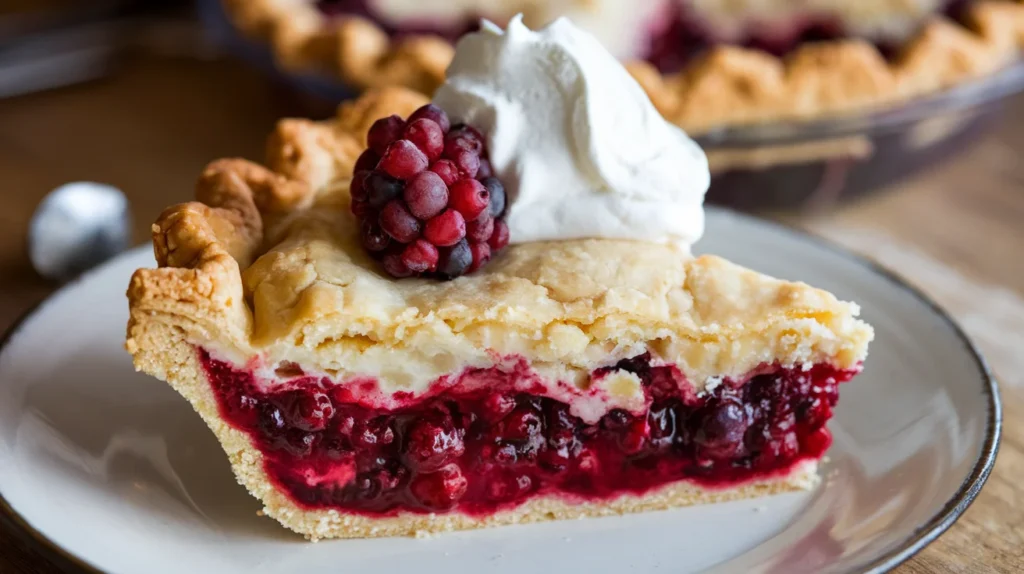
For pies with pre-baked crusts, follow these reheating tips:
- Preheat the oven to 350°F (175°C).
- Place the crust or pie on a baking sheet and warm it for 10–15 minutes.
- Avoid microwaving, as this can make the crust soggy.
When serving, pair your pie with fresh whipped cream, a scoop of ice cream, or even a drizzle of caramel for an elevated experience.
“Pair your pies with a comforting side dish like this Honey Cornbread Recipe.”
Conclusion
Mastering the art of a flaky, tender pie crust using Crisco is simpler than you might think. From understanding the basics of pie crust making to customizing flavors and troubleshooting common issues, this guide has provided everything you need to create the perfect crust for any occasion.
Crisco’s unique qualities—its 100% fat composition, ease of use, and neutral flavor—make it a standout choice for bakers seeking consistent results. Whether you’re preparing a sweet apple pie, a savory chicken pot pie, or even experimenting with creative fillings, this recipe will set you up for success.

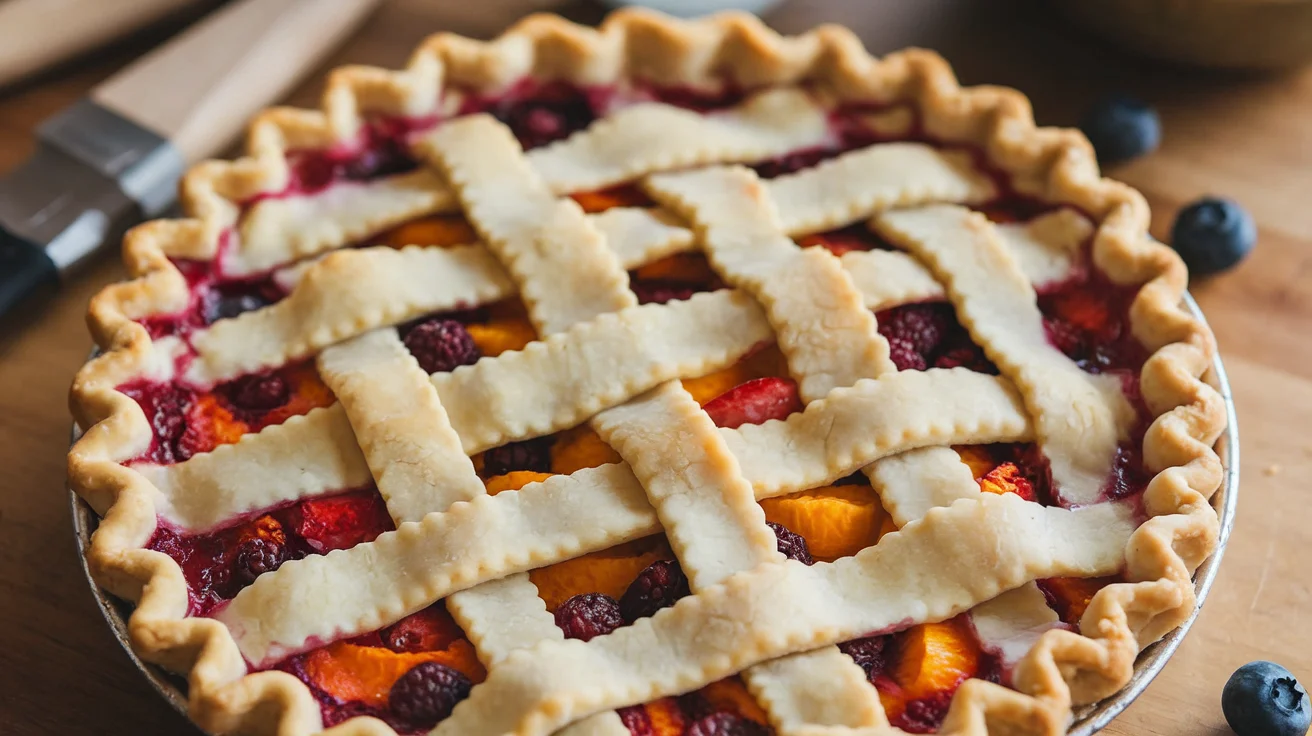


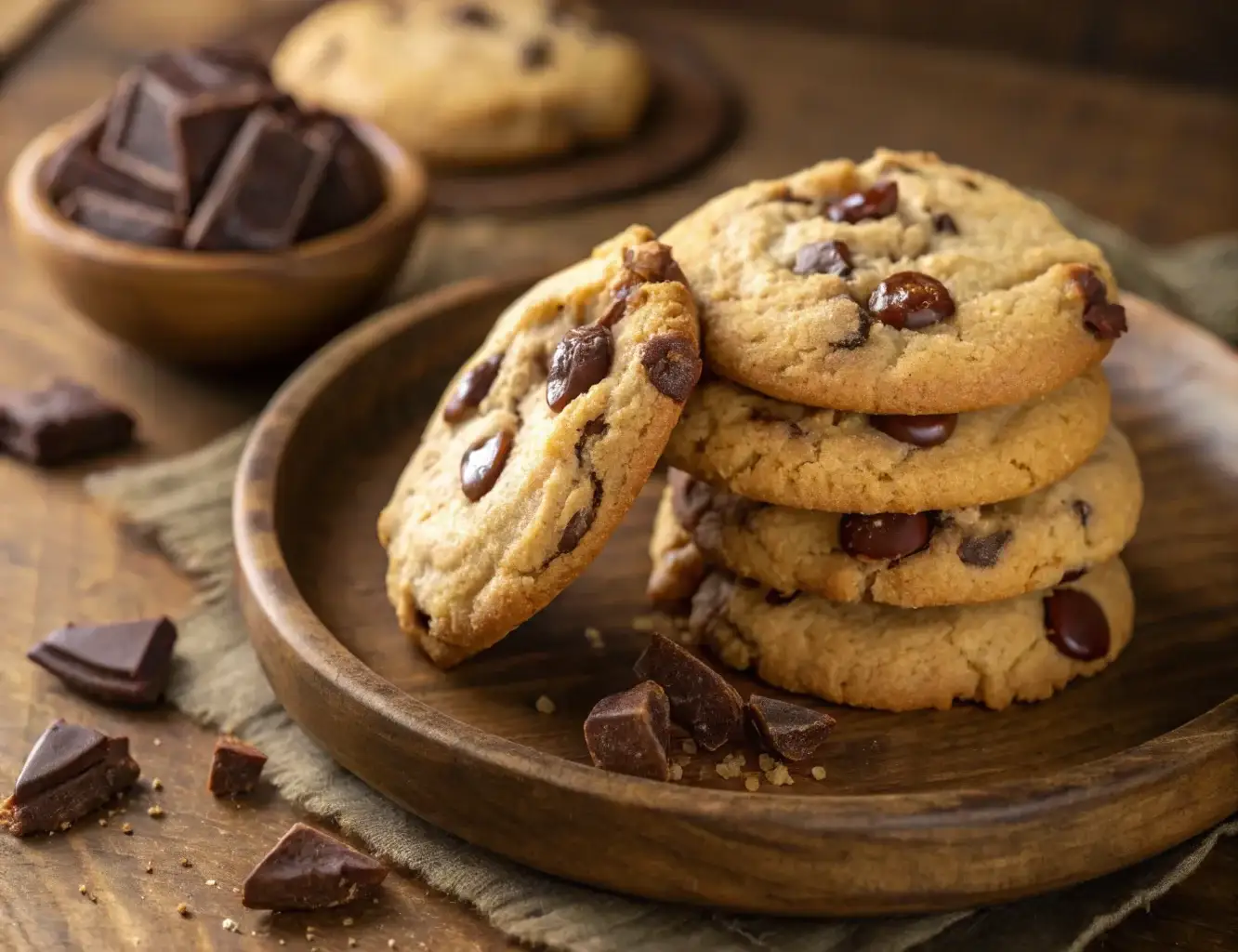
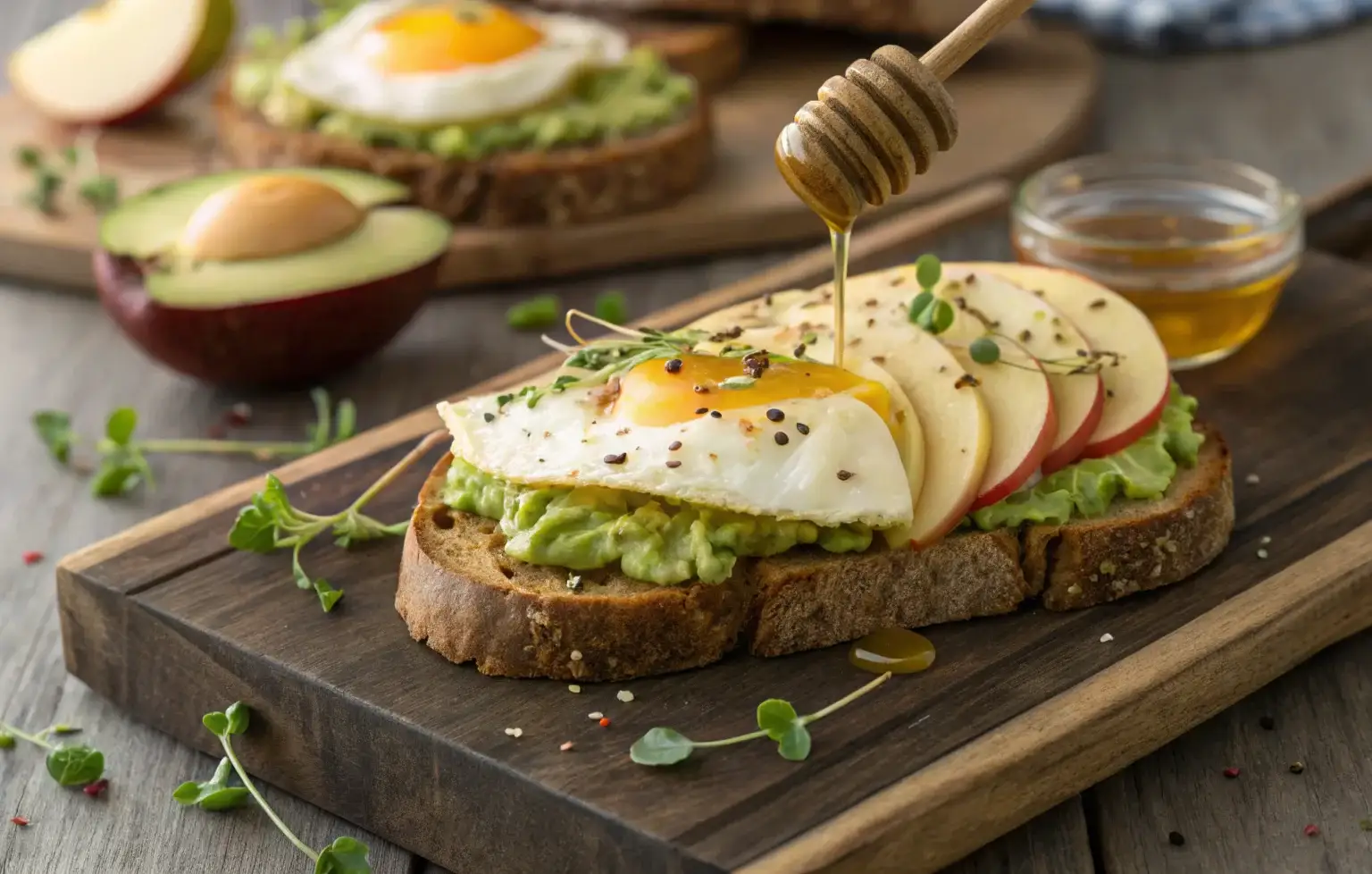
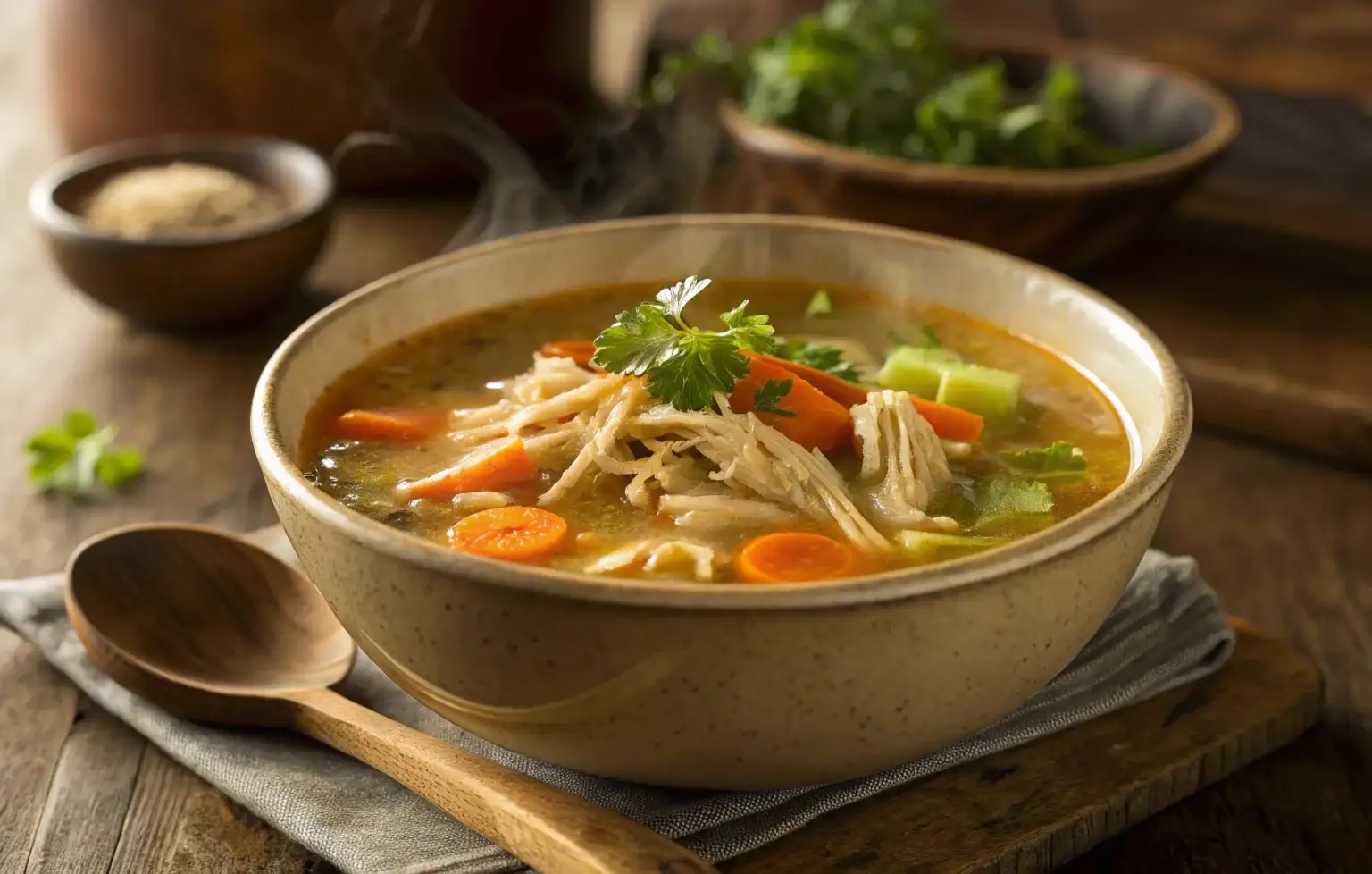

1 thought on “The Ultimate Pie Crust Recipe Using Crisco: A Step-by-Step Guide”